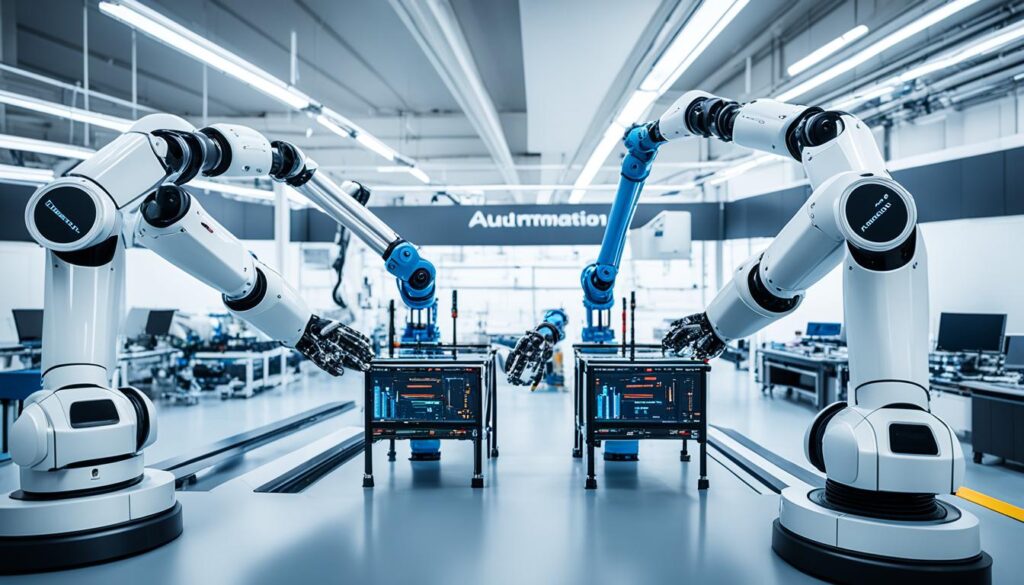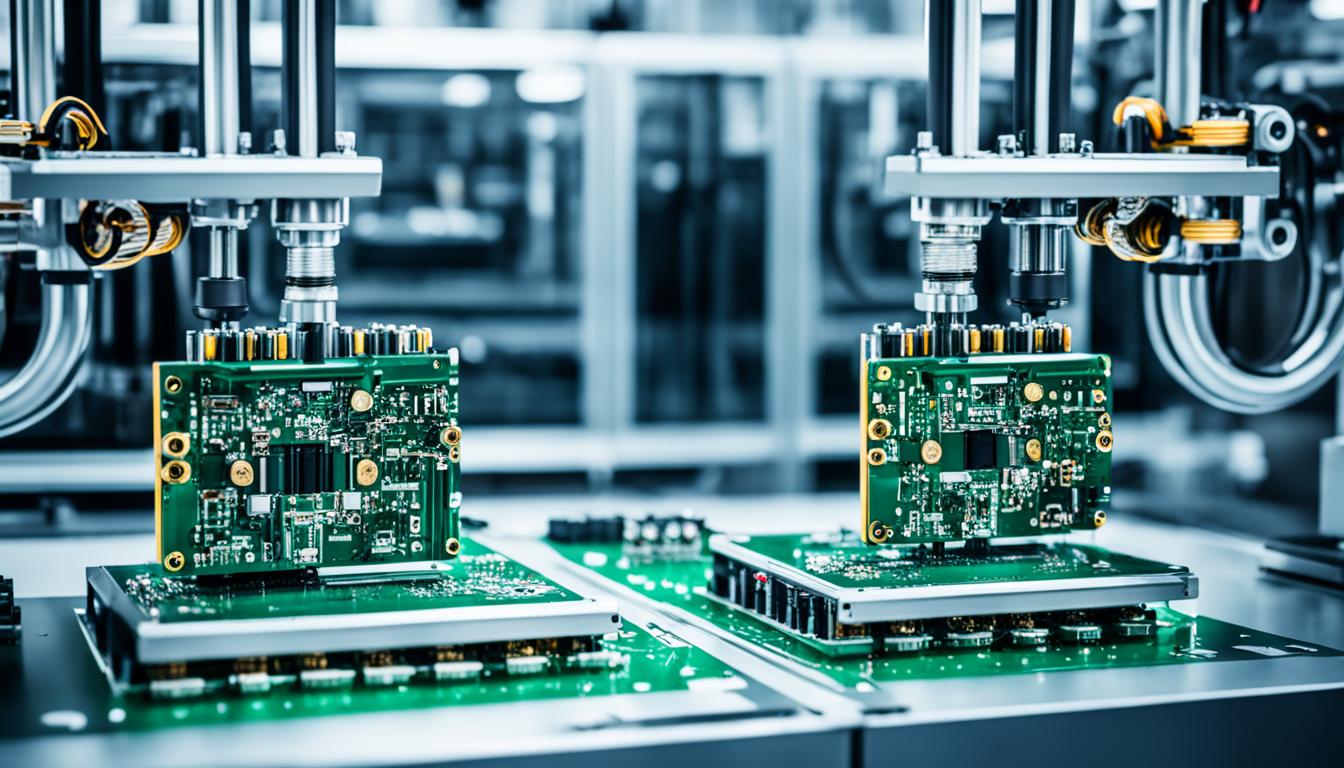As an avid enthusiast of AI, I’ve come to deeply appreciate the transformative power of automation and artificial intelligence (AI). These two distinct yet interconnected technologies are revolutionizing the way businesses operate, and understanding their key differences is crucial for harnessing their full potential.
Automation, on one hand, is the utilization of specialized technology and software to execute repetitive, predefined tasks without human intervention. It’s all about enhancing efficiency and reducing the reliance on manual labor. In contrast, AI involves the development of machines and systems capable of performing complex, decision-making tasks that traditionally require human intelligence, such as natural language processing, image recognition, and problem-solving. While automation focuses on consistent task execution, AI aims to mimic and augment human cognitive abilities.
As a member of the “AI Automation Elite” community, I’ve gained a deeper understanding of how these technologies can work in synergy. By strategically integrating automation and AI, businesses can unlock unprecedented levels of productivity, efficiency, and innovation. The community offers valuable resources, including DIY strategies, automation tutorials, and exclusive insights, to help members like myself navigate the ever-evolving landscape of AI and automation.
Introduction
AI and automation are two distinct yet interconnected concepts that have transformed the business landscape. While often used interchangeably, these technologies possess unique characteristics and applications that can profoundly impact an organization’s efficiency and productivity. This article delves into the significance of AI and automation, exploring their key differences and highlighting the benefits of integrating these powerful tools to drive innovation and growth.
The Significance of AI and Automation
Artificial Intelligence (AI) and automation are revolutionizing the way businesses operate. Automation refers to the process of using technology to perform tasks and workflows without human intervention, streamlining repetitive and time-consuming processes. On the other hand, AI involves the development of systems and algorithms that can mimic human decision-making, learn from data, and make autonomous decisions.
The integration of AI and automation holds immense potential for organizations. By leveraging these technologies, businesses can enhance efficiency, improve decision-making, and free up valuable human resources to focus on strategic priorities.
“The future of work is a fusion of human and machine, where AI and automation work together to enhance productivity and innovation.”
As the business landscape continues to evolve, a deep understanding of the synergies between AI and automation is crucial for organizations seeking to stay ahead of the curve. By exploring the key differences and benefits of these technologies, business leaders can make informed decisions and position their companies for long-term success.
What is Automation?
Automation is the process of setting up systems and procedures to execute repetitive, rule-based tasks without direct human intervention. The primary goal of automation is to free people from tedious, error-prone activities and improve overall efficiency. Automation can range from simple mechanical devices to sophisticated software and machinery.
By automating tasks that are better suited for machines, businesses can reduce operational costs, boost productivity, and enhance the accuracy and consistency of their processes. Automation encompasses a wide spectrum, from robotic process automation to intelligent systems powered by predictive analytics. The key is to identify the right automation solutions that align with your business objectives and workflows.

“Automation is not just about improving efficiency; it’s about empowering people to focus on more strategic, value-added work.”
| Benefit | Description |
|---|---|
| Cost Reduction | Automation can help businesses lower operational costs by reducing the need for manual labor and streamlining processes. |
| Increased Productivity | Automated systems can work tirelessly, completing tasks faster and with higher accuracy than manual processes. |
| Improved Consistency | Automation ensures that tasks are executed consistently, reducing the risk of human errors and variations in output. |
What is Artificial Intelligence (AI)?
Artificial intelligence (AI) is a captivating field that focuses on creating machines and systems capable of mimicking human cognitive functions. This includes understanding natural language, recognizing patterns, solving problems, and learning from experience. AI encompasses a range of technologies, such as machine learning, natural language processing, and deep learning.
Types of AI
There are two main types of AI: Narrow AI (or “weak AI”) and General AI (or “strong AI”). Narrow AI is designed to perform specific, pre-defined tasks, while General AI aims to replicate human-level intelligence, although this form of AI is not yet a reality.
AI-powered systems have the ability to adapt and improve over time, unlike traditional automation, which is focused on executing predefined, consistent tasks. This adaptability allows AI-driven applications to become increasingly proficient at their designated functions, making them a powerful tool in various industries.
– Artificial Intelligence Pioneer, Guy Mezger
| Type of AI | Description |
|---|---|
| Narrow AI | Designed to perform specific, predetermined tasks |
| General AI | Aims to replicate human-level intelligence, but not yet achieved |
Automation vs AI: Key Differences
When it comes to the realm of technology, the concepts of automation and artificial intelligence (AI) often intersect, yet they possess distinct characteristics. The key difference lies in their approach to decision-making.
Automation is primarily focused on executing repetitive tasks in a consistent and reliable manner, following pre-defined rules. It excels at performing well-defined, routine operations, ensuring efficiency and accuracy. In contrast, artificial intelligence is designed to mimic human cognitive abilities, enabling machines to learn, adapt, and make decisions based on patterns and past experiences, without explicit programming.
While automation is adept at handling standardized workflows, AI introduces a transformative element by allowing machines to think, learn, and problem-solve in a more human-like manner. This adaptability and learning capability of AI sets it apart from the rigid, rule-based nature of automation.
To further illustrate the differences, consider the example of a task like data entry. Automation can automate the process of inputting data into a system, ensuring consistent formatting and accuracy. However, if the data structure changes or new variables are introduced, automation may struggle to adapt. In contrast, an AI-powered system could analyze the new data, learn the patterns, and adjust its algorithms accordingly, seamlessly handling the task with greater flexibility.
| Automation | Artificial Intelligence (AI) |
|---|---|
| Executes repetitive tasks based on pre-defined rules | Mimics human cognitive abilities to learn, adapt, and make decisions |
| Focuses on efficiency and accuracy in well-defined workflows | Introduces flexibility and adaptability to handle changing conditions |
| Excels at standardized, routine operations | Capable of problem-solving and decision-making in a more human-like manner |
In summary, while automation and AI share the common goal of enhancing productivity and efficiency, their underlying approaches and capabilities differ significantly. Understanding these key distinctions is crucial for businesses and individuals seeking to leverage the power of these transformative technologies effectively.
Benefits of Integrating AI and Automation
As the digital landscape continues to evolve, the integration of artificial intelligence (AI) and automation has become a game-changer for businesses across industries. By harnessing the power of these complementary technologies, organizations can unlock a range of synergistic advantages that drive enhanced efficiency, operational resilience, and cost savings.
One of the primary benefits of this convergence is the ability to leverage AI-powered analytics to uncover valuable insights that inform data-driven decision-making. When coupled with the consistent and reliable execution of automated processes, these insights can be seamlessly translated into tangible business outcomes. This powerful combination enables organizations to streamline operations, optimize resource allocation, and respond more effectively to changing market demands.
Beyond operational improvements, the integration of AI and automation also fuels innovation. By automating repetitive tasks and freeing up human resources, businesses can redirect their focus towards the development of groundbreaking solutions. From personalized customer experiences to predictive disease forecasting in healthcare, the possibilities are endless when these two technologies work in harmony.
At the AI Automation Elite community on Skool, we are dedicated to empowering our members with the knowledge and tools to harness the synergistic potential of AI and automation. Through a wealth of DIY strategies, automation tutorials, and exclusive resources, we help our members navigate the complexities of implementation and drive tangible business results.
“The convergence of AI and automation is a game-changer, unlocking new levels of efficiency, innovation, and cost savings for businesses.”
Automation vs AI
While automation and artificial intelligence (AI) are often discussed together, it’s crucial to understand their distinct characteristics and applications. Automation is primarily focused on performing repetitive tasks consistently and efficiently, while AI is designed to mimic human cognitive abilities, enabling machines to learn, adapt, and make decisions autonomously.
Automation excels at well-defined, rule-based processes, ensuring consistent and reliable outputs. In contrast, AI introduces a transformative element by allowing systems to think, problem-solve, and innovate in a more human-like manner. This means AI can tackle more complex, non-linear tasks that require adaptive and creative problem-solving skills.
The key differences between automation and AI can be summarized as follows:
- Automation is driven by pre-programmed rules and algorithms to automate repetitive, structured tasks, whereas AI utilizes machine learning and natural language processing to mimic human intelligence and decision-making.
- Automation is designed to improve efficiency and consistency, while AI aims to enhance productivity, innovation, and strategic decision-making.
- Automation is well-suited for routine, predictable processes, while AI excels at handling unstructured, complex, and dynamic problems that require cognitive abilities.
Recognizing the unique strengths of automation and AI is key to strategically integrating these technologies and unlocking their full potential for business success. By understanding the differences, organizations can leverage the power of automation to drive operational efficiency and deploy AI to enable more intelligent, adaptive, and innovative solutions.
“The future of work will be a hybrid of human and machine, with each playing to their respective strengths.”

Conclusion
Automation and artificial intelligence (AI) are undoubtedly transforming the business landscape, each with its unique capabilities and applications. While automation focuses on executing repetitive tasks consistently, AI enables machines to learn, adapt, and make decisions in a more human-like manner. By understanding the key differences between these two powerful technologies, organizations can leverage them strategically to drive sustainable growth and achieve impressive results.
The AI Automation Elite community on Skool serves as a testament to the power of integrating automation and AI. This platform fosters a network of innovators who collaborate, share knowledge, and tackle challenges together. By providing DIY strategies, automation tutorials, and exclusive resources, the AI Automation Elite community empowers its members to implement these transformative technologies effectively and unlock a range of synergistic benefits, including enhanced efficiency, operational resilience, cost savings, and data-driven innovation.
As I continue my journey in the world of automation and AI, I’m excited to see how these technologies will continue to shape the future of business. By staying informed, adaptable, and innovative, I can navigate this dynamic landscape and leverage the power of automation and AI to drive my organization’s success.
FAQ
What is the difference between automation and artificial intelligence (AI)?
How do automation and AI complement each other?
What are the benefits of integrating AI and automation?
What are the different types of AI?
How can businesses leverage the strategic integration of AI and automation?
Source Links
- AI vs Automation: What’s the difference? – https://www.leapwork.com/blog/ai-and-automation-what-is-the-difference
- AI vs. Automation: Decoding the Differences for Business Success – https://appian.com/blog/acp/ai/difference-between-ai-automation
- Automation vs. AI: Meaning, Differences, and Real World Uses – https://www.coursera.org/articles/automation-vs-ai
